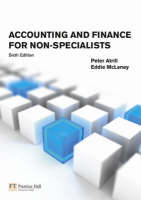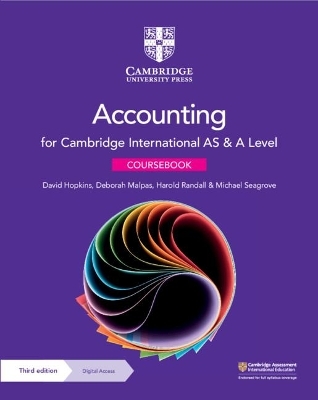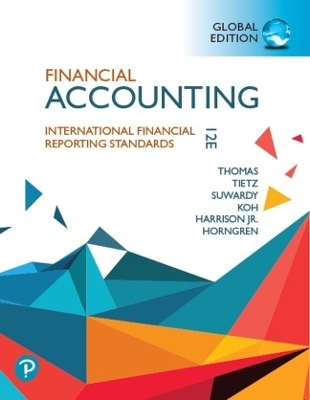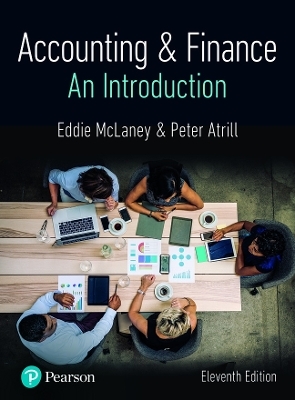
Accounting and Finance for Non-Specialists 6th plus MyAccountingLab XL student Access Card
Financial Times Prentice Hall
978-1-4082-0804-5 (ISBN)
- Titel ist leider vergriffen;
keine Neuauflage - Artikel merken
1. Introduction to accounting and finance Introduction Learning objectives What are accounting and finance? Accounting and user needs Not-for-rofit organisations Accounting as a service function The threshhold of materiality Costs and benefits of accounting information Accounting as an information system Planning and control Management and financial accounting Has accounting become too interesting? Why do I need to know anything about accounting and finance? Business objectives Summary Key terms Further reading Review questions 2. Measuring and reporting financial position Introduction Learning objectives The major financial statements - an overview The balance sheet The effect of trading operations on the balance sheet The classification of assets The classification of claims Balance sheet formats The balance sheet as a position at a point in time Accounting conventions and the balance sheet Accounting for goodwill and product brands The basis of valuation of assets on the balance sheet Interepting the balance sheet Summary Key terms Further reading Review questions 3. Measuring and reporting financial performance Introduction Learning objectives The income statement (profit and loss account) Relationship between the income statement and the balance sheet The format of the income statement The income statement - some further aspects Profit measurement and the recognition of revenue Profit measurement and the recognition of expenses Profit measurement and the calculation of depreciation Profit measurement and inventory costing methods Profit measurement and the probem of bad or doubtful debts Interpreting the income statement Summary Key terms Further reading Review questions 4. Accounting for limited companies Introduction Learning objectives Generating wealth through limited companies Managing a company - corporate governance and the role of directors Financing limited companies Raising share capital Loans and other sources of finance Restriction on the right of shareholders to make drawings of capital Accounting for limited companies The directors' duty to account The need for accounting rules The main sources of accounting rules Directors report Auditors Accounting rules and the quality of financial statements Summary Key terms Further reading Review questions 5. Measuring and reporting cash flows Introduction Learning objectives The cash flow statement Preparing the cash flow statement What does the cash flow statement tell us? Summary Key terms Further reading Review questions 6. Analysing and interpreting financial statements Introduction Learning objectives Financial ratios Financial ratio classifications The need for comparison Calculating the ratios A brief overview Profitability Efficiency The relationship between profitability and efficiency Liquidity Gearing Investment ratios Trend analysis Ratios and prediction models Limitations of ratio analysis Summary Key terms Further reading Review questions 7. Cost-volume-profit analysis Introduction Learning objectives The behaviour of costs Fixed costs Variable costs Semi-fixed costs Break-even analysis Contribution Margin of safety and operation gearing Marginal analysis Accepting/rejecting special contracts The most efficient use of scarce resources Make or buy decisions Closing or continuation decisions Summary Key terms Further reading Review questions 8. Full costing Introduction Learning objectives The nature of full costing Deriving full costs in a single product operation Deriving full costs in multi-product organisations Activity based costing (ABC) Uses of full cost information Criticisms of full costing Summary Key terms Further reading Review questions 9. Budgets Introduction Learning objectives Budgets, long term plans and corporate objectives Time horizon of plans and budgets Budgets and forecasts The interrelationship of various budgets The uses of budgets The extent that budgets are prepared Preparing the cash budget Preparing other budgets Using budgets for control Comparing the actual performance with the budget Stadard quantities and cost Reasons for adverse variances Investigating variances Compensating variances Making budgetary control effective Limitations of the traditional approach to control through variances and standards Behavioural aspects of budgetary control Summary Key terms Further reading Review questions 10. Making capital investment decisions Introduction Learning objectives The nature of investment decisions Methods of investment appraisal Accounting rate of return (ARR) Payback period (PP) Net present value (NPV) Why NPV is superior to ARR and PP Internal rate of return (IRR) Some practical points Investment appraisal in practice Summary Key terms Further reading Review questions 11. Managing working capital Introduction Learning objectives The nature and purpose of working capital The scale of working capital Managing inventories (stock) Managing receivables (debtors) Managing cash Managing trade payables (creditors) Summary Key terms Further reading Review questions 12. Financing a business Introduction Learning objectives Sources of finance Internal sources of financing Sources of external finance Gearing and the long term finance decision Share issues The role of the stock exchange Short term sources of external finance Providing long term finance for the small business Summary Key terms Further reading Review questions Glossary of key terms Solutions to self-assessment questions Solutions to selected exercises Index
| Verlagsort | Harlow |
|---|---|
| Sprache | englisch |
| Maße | 169 x 233 mm |
| Gewicht | 948 g |
| Themenwelt | Wirtschaft ► Betriebswirtschaft / Management ► Rechnungswesen / Bilanzen |
| ISBN-10 | 1-4082-0804-0 / 1408208040 |
| ISBN-13 | 978-1-4082-0804-5 / 9781408208045 |
| Zustand | Neuware |
| Haben Sie eine Frage zum Produkt? |
aus dem Bereich


